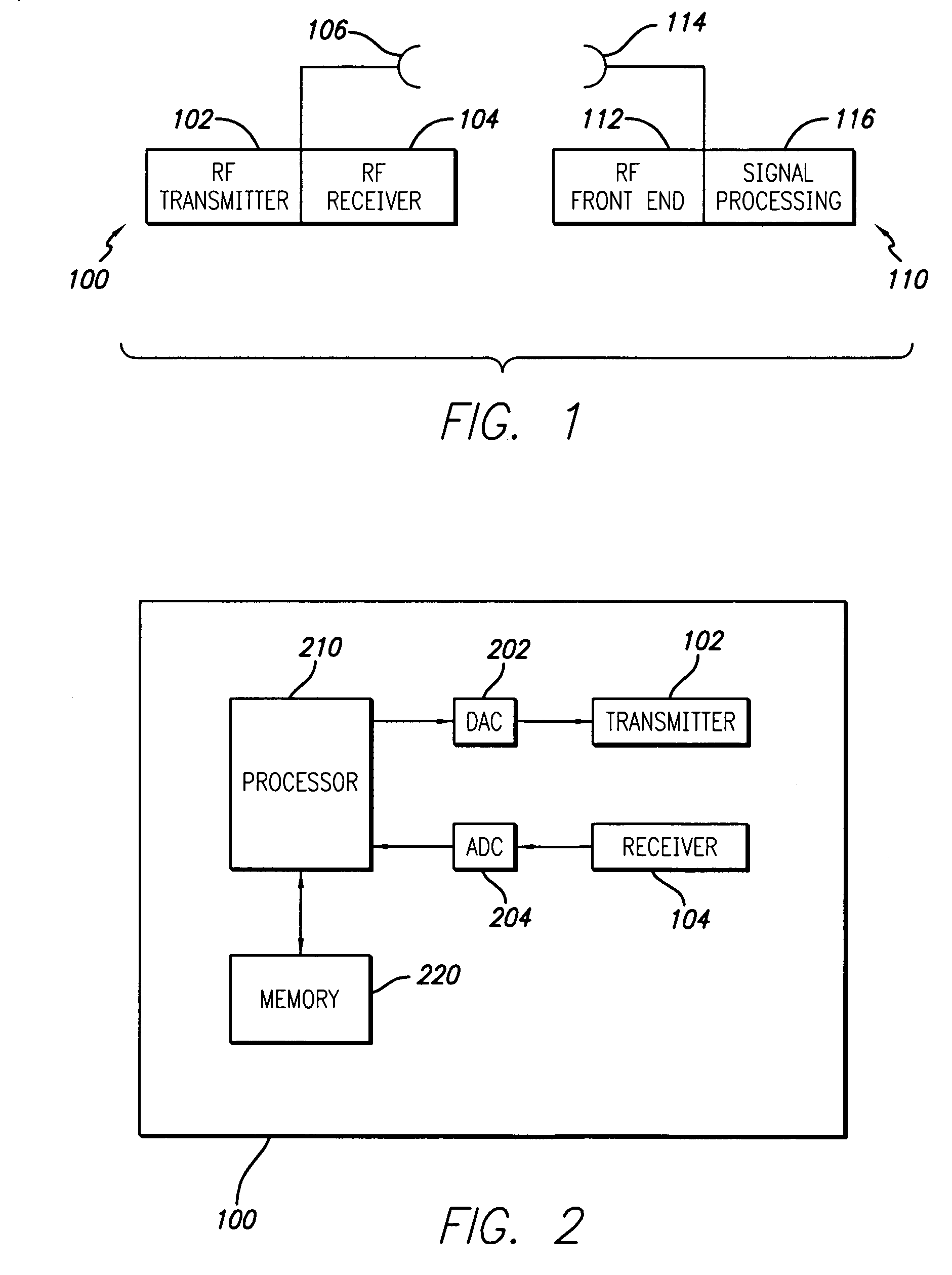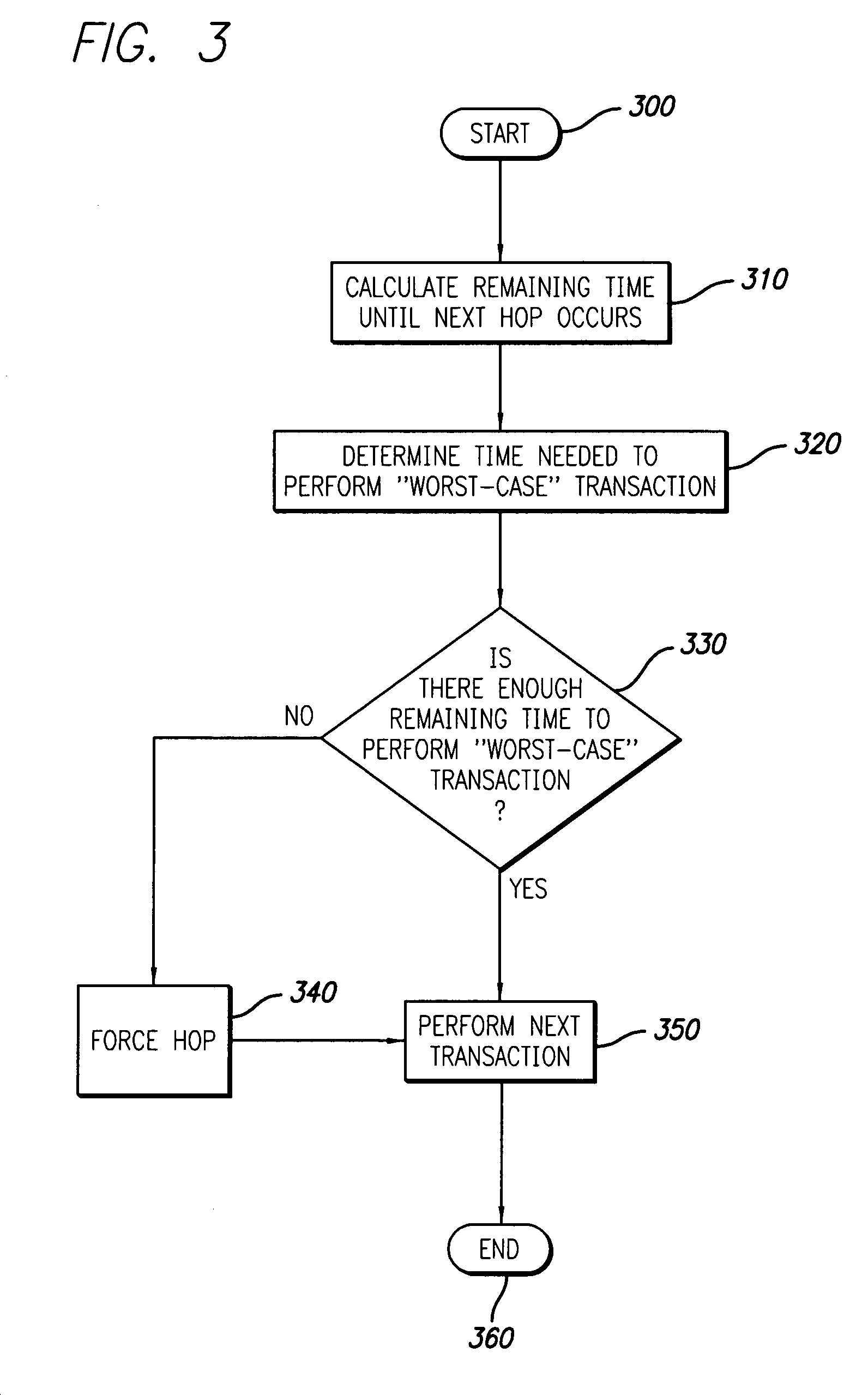Frequency hopping spread spectrum scheme for RFID reader
- Summary
- Abstract
- Description
- Claims
- Application Information
AI Technical Summary
Benefits of technology
Problems solved by technology
Method used
Image
Examples
Embodiment Construction
[0019]The present invention provides a system and method for improving transmission rates in RFID base stations by implementing forced frequency “hops.” In the detailed description that follows, like element numerals are used to describe like elements illustrated in one or more figures.
[0020]An RFID system in accordance with the principles of the present invention is illustrated in the conceptual block diagram of FIG. 1. A base station 100 includes (in part) an RF transmitter 102, an RF receiver 104, and an antenna 106 connected to the transmitter 102 and receiver 104. An RFID tag 110 such as may be used in conjunction with the base station 100 includes an RF front end 112, a signal processing section 116, and an antenna 114. The RFID tag 110 may further include a memory (not shown) in which data may be stored, retrieved and / or written.
[0021]In reading the RFID tag 110, the base station 100 interrogates the tag 110 by generating an RF signal over a carrier frequency. The carrier fre...
PUM
 Login to View More
Login to View More Abstract
Description
Claims
Application Information
 Login to View More
Login to View More - R&D
- Intellectual Property
- Life Sciences
- Materials
- Tech Scout
- Unparalleled Data Quality
- Higher Quality Content
- 60% Fewer Hallucinations
Browse by: Latest US Patents, China's latest patents, Technical Efficacy Thesaurus, Application Domain, Technology Topic, Popular Technical Reports.
© 2025 PatSnap. All rights reserved.Legal|Privacy policy|Modern Slavery Act Transparency Statement|Sitemap|About US| Contact US: help@patsnap.com



